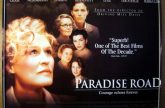Melody and How Music Works (Howard Goodall)
Why does melody affect us so deeply, from the moment we are born? Tunes touch our deepest emotions, and are capable of inspiring love, sorrow, faith, and hope. But how does a melody actually work? In this documentary, composer Howard Goodall looks at melody’s basic elements. Why are some melodic shapes common to all cultures across the world? Can successful melodies be written at random? If not, what are the familiar melodic patterns composers of all types of music have fallen back on again and again, and why do they work? Watch this interesting clip Melody and How Music Works and learn.
The definition of melody in music is:
- the succession of single tones in musical compositions, as distinguished from harmony and rhythm.
- the principal part in a harmonic composition; the air.
- a rhythmical succession of single tones producing a distinct musical phrase or idea.
A melody consists of a linear sequence of tones. A good melody (even if it doesn’t have words) is often one that we could hum, sing or whistle. In general we prefer melodies where the tones are reasonably close together, with a variety of nice harmonious intervals between them, and a rhythm similar to that of speech.
The notes should not be in an extreme range and shouldn’t have large awkward jumps between them. The notes should also have durations which are not too short and not too long (often in the range of 0.1 second to 2 seconds). In this way melodies are very similar to sentences that our brains are designed to speak and listen to, although instrumental musical can stretch those boundaries a little.
Different types of melodies also help to convey different emotions, for example chromatic melodies or melodies belonging to a minor scale are often seen as darker than melodies from a major scale (see the section on harmony below). Research has also shown that the emotions of melodies mirror the emotions of speech. Just as sad people tend to talk in a monotone, sad music seems to move in very small intervals within a narrow range. In contrast happy people talk using a greater tonal range, and happy music follows this pattern using larger intervals over a wider range.
.
?*?*?
.
Would you like to support our Foundation? Do you know of a teenage girl who loves to read books? Here’s a link to one of our fundraisers – a teen book titled The Bravehearts of Belgrave High. Click on the following link to read more: The Tolemac Chronicles
Or donate via the link that you see on our blog site at: Loving Heart Foundation blog




































